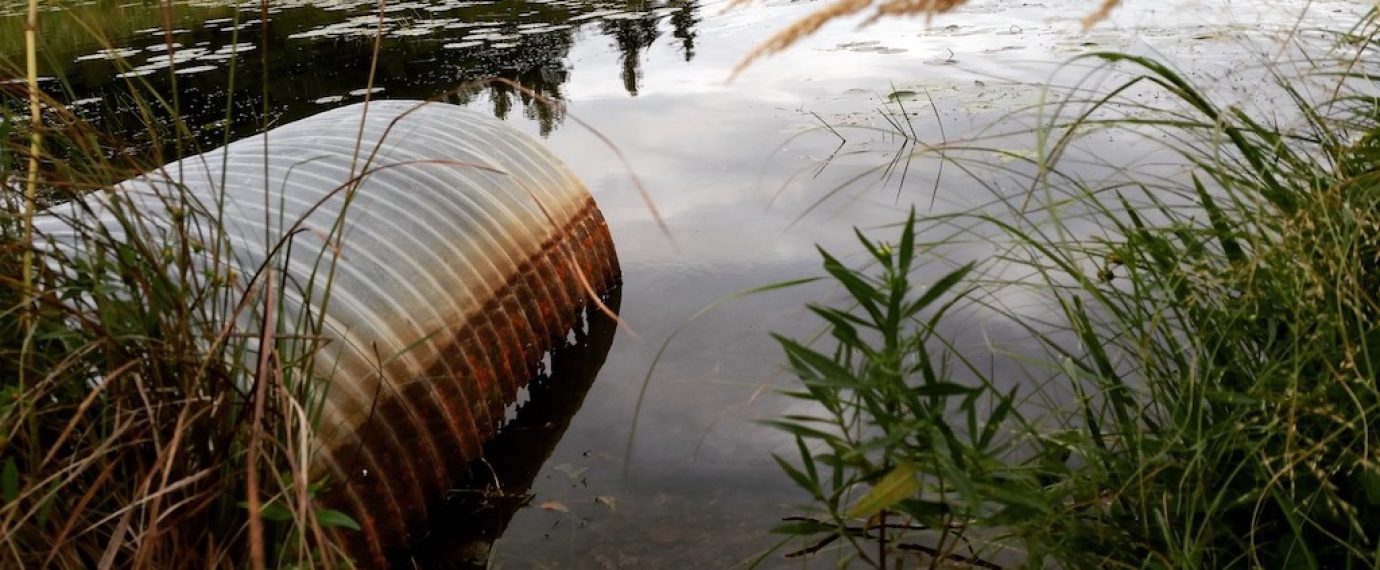The Texas Commission on Environmental Quality (TCEQ) has issued the new Multi-Sector General Permit (MSGP) TXR050000 for industrial facilities, effective August 14, 2021. This permit applies to a broad range of industrial sectors and includes most manufacturing facilities. Facilities with an existing permit must apply to renew their coverage within 90 days of the new permit’s effective date (November 12, 2021). The renewal process also requires facilities to update their Stormwater Pollution Prevention Plan (SWPPP) to the new requirements of the permit. To meet this deadline for the renewed coverage of your permit, U.S. Compliance can assist your facility with the online application process and the development of an updated SWPPP.
The new permit is similar to the previous permit, with some important changes that will apply to any facility continuing coverage. This article will describe the basics of stormwater permitting, the TCEQ’s online e-permitting system (STEERS), changes that will apply to the facilities covered under the new permit, and how to stay in compliance with the new permit rules.
Industrial Stormwater Permitting Review
When an industrial facility conducts certain operations on-site and discharges stormwater, the TCEQ regulates those discharges for potential pollutants to surface waters that may occur during stormwater events. The goal of stormwater permitting is to eliminate pollutants from entering surface waters by preventing them from entering stormwater runoff. This is managed primarily through a program known as the National Pollutant Discharge Elimination System (NPDES), which was introduced by the Clean Water Act. In 1998, Texas assumed the authority to administer these rules under the Texas Pollutant Discharge Elimination System (TPDES).
Every five years, the TCEQ releases an updated permit that requires facilities to submit an application to continue coverage under the updated permit. This application, also known as a Notice of Intent (NOI), will now be submitted using an online reporting system created by the TCEQ. Before entering into the process of applying for the MSGP coverage, it is important to determine if your facility is applicable to this updated permit.
Determining if Your Facility is Applicable
Below are two scenarios a facility may find itself in:
The facility was covered under the old permit
If a facility was previously covered under the MSGP, the facility is likely applicable to the updated permit as long as the facility operations and significant materials have not changed. Facilities previously covered by the old permit MUST reapply by November 12, 2021.
The facility was not covered under the old permit but is wondering if they apply to the new permit
There are two factors to consider when determining applicability of the new permit.
- Does your facility discharge stormwater associated with an industrial activity to gutters, streets, channels, ditches, or other stormwater conveyance systems?
- Does your facility have a business activity that fits into the regulated industrial sectors?
If a facility answers “yes” to both questions above, you are required to be covered by the MSGP.
First, you must determine which Standard Industrial Classification (SIC) code your facility falls under. Then, you can refer to the MSGP to determine if you need to apply for coverage under the permit and which set of rules you must follow to remain in compliance with the permit. This set of rules is managed by utilizing an SWPPP, which is a requirement of the MSGP. These plans allow facilities to track a multitude of stormwater-related activities, significant materials on-site, and best management practices (BMPs) that will help to eliminate pollutants from entering stormwater. While this article will not be delving into the specific details of SWPPPs, you can find all of the information you need about keeping your plans compliant here.
Once you have determined that your facility must have coverage under the MSGP, it is important to determine what you might have to do differently under the updated permit.
The Switch to Online Permitting
It is now required to create an account through the TCEQ online reporting system. Traditionally, the TCEQ required all stormwater permit applications and reporting to be completed via paper and mail. Now, with the creation of the online reporting system called the State of Texas Environmental Electronic Reporting System (STEERS), things have been made a little easier. However, there is still a little bit of work involved to set up your account through STEERS.
The TCEQ has provided a comprehensive guide on their website, which can be found here.
The basic steps include:
- Filling out an application of basic data, including your information and your facility’s information.
- Adding applicable environmental programs to your STEERS account (i.e. Stormwater General Permits).
- Setting the permissions on your account to be either preparer or certifier of reports and applications.
- Completing a STEERS Participation Agreement form (web-based using a valid Texas Driver’s license or paper and mail).
Once your STEERS account is established, completing your application (NOI) is the next step to ensure you have continued coverage under the new MSGP. This will include answering questions about your facility, like outfall locations, and confirming a few items concerning stormwater runoff.
Sections That Have Changed
The requirements in the permit have been revised, so all existing facilities must ensure that their application is submitted and that their SWPPP meets all permit requirements. Outlined below are a few of the significant changes to the permit and the application process.
- Monitoring and Sampling – Sections of the permit that address these requirements have been modified to clarify exactly where facilities are required to sample.
- Renewal Application Details – The application form now requires details on every outfall at your facility. This includes the exact location of each outfall (with coordinates) and what body of water is receiving runoff from each outfall. Also, it is required to include the industrial activities that are subject to federal effluent limitation guidelines, pollutants of concern, and waiver criteria from monitoring hazardous metals.
- Benchmark Values and Sampling – Sector-specific benchmark limits have changed in the new permit. When sampling is required of a facility, these new values must be known to determine permit compliance. It has also been added that monitoring is not required in year five of the permit since it does not have two full six-month monitoring periods.
- Permit Language and Clarifications – Since many facilities were incorrectly interpreting the previous permit requirements, the TCEQ has updated the new permit with new permit language and clarifications to ensure all permit requirements are being communicated.
- SWPPP Requirements – All existing permittees are required to have a plan on-site that meets the new permit requirements by November 12, 2021. This means that the SWPPP is required to be updated before submittal of the NOI.
A full guide to the changes from the old MSGP to the new MSGP can be found on the fact sheet released by TCEQ.
Staying in Compliance
The goal for a facility is to conduct all industrial operations while maintaining compliance under the MSGP. If these next few items are followed in conjunction with the facility’s SWPPP, it will help maintain compliance under the MSGP.
If there are any major changes on-site, like construction or changes to manufacturing processes, it could mean that updates to the facility’s SWPPP are required. If any major changes occur, the best option is to contact U.S. Compliance to determine the necessary actions.
Next, it is important to conduct all inspections and sampling on a regular schedule to ensure no items are missed. This will create good habits that often lead to healthy on-site compliance.
Leading the following tip, it is important to ensure that every employee involved in stormwater management roles is familiar with the facility’s SWPPP. This is not only required but will make inspections of BMPs much more effective. Further, it will help the employees determine if BMPs must be adjusted to meet the criteria of the significant material or operations being managed.
The final compliance tip is a simple but often overlooked item, organized recordkeeping. Once a solid and organized recordkeeping habit is established, it will be much easier to keep everything in check. Plus, organized recordkeeping can often determine a regulator’s first impression when arriving on-site. Ensure that all inspections forms, sampling results, and training logs are maintained on-site within the facility’s SWPPP to stay on top of compliance.
Summary
This article discussed a lot of topics to help ensure you are covered under the new MSGP. Here is a quick review of the key takeaways.
The new stormwater permit has been released and requires any facilities previously covered to:
- Set up an online account through the TCEQ’s new e-permitting system known as STEERS.
- Update the facility’s SWPPP to the new permit requirements (prior to submitting a renewal application).
- Submit an online renewal application (NOI) through STEERS by November 12, 2021.
In order to do any of this, it is important to set up an account through STEERS. Once a facility is covered under the new permit, the hard work is done, and maintaining compliance is all that’s left to do. Compliance can be maintained by following the facility’s SWPPP closely along with the tips given above. As always, U.S. Compliance is here to help with any questions or concerns. Please be sure to contact us with any questions that you have concerning the new MSGP and beyond.



